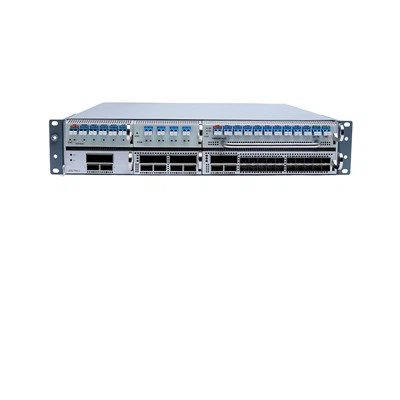Stage of development
With the rapid development of optical fiber communication, optical communication network has become the basic platform of modern communication network. The optical fiber communication system has experienced several development stages, from PDH system in the late 1980s, SDH system in the mid-1990s, WDM system, optical fiber communication system rapidly updated. Dual-wavelength WDM (1310/1550nm) systems were used on THE AT&T network in the 1980s at a rate of 2×17Gb/s. WDM technology is used to transfer the multiplexing mode from electric signal to optical signal for the first time. In the optical domain, wavelength division multiplexing (i.e., frequency multiplexing) is used to improve the transmission rate. Optical signals realize direct multiplexing and amplification, and each wavelength is independent from each other, which is transparent to the transmitted data format. One of the hot points in current research is DWDM. The level of DWDM laboratory can be 100, 10Gbit/s, with a relay distance of 400km; 30, 40Gbit/s, the relay distance is 85km; 64, 5Gbit/s, the relay distance is 720km. Dense wavelength division multiplexing DWDM has a commercial level of 320Gbit/s, that is, a pair of optical fibers can transmit 4 million lines. Commercial systems are currently capable of carrying only 1/100 of the potential capacity of a single fiber of tens of Tbits/s.
Research on WDM technology started late in China. First, WDM technology was used for point-to-point capacity expansion on long-distance trunk lines, and then OADM and OXC technologies were used for up/down communication on nodes. China introduced the first 8-wavelength WDM system in 1997 and installed it on the main line from Xi'an to Wuhan. In 1998, China began to introduce 8× 2.5GB/s WDM system on a large scale, expanding and transforming 12 inter-provincial optical cable trunk lines with a total length of more than 20,000 km. At the same time, the trunk lines in each province have successively adopted THE WDM technology for capacity expansion. For example, in the "Nanchang - Jiujiang" optical cable capacity expansion project, the equipment of AT&T Company and the dual-window WDM system were adopted, namely, a system was respectively operated at 1310nm and 1550nm, two low-loss working Windows of G.652 optical fiber. In this way, sdH2.5GB /s system can be added by using the unused 1550nm window without dismantling the original PDH device of 1310nm window. In order to ensure the high speed, large capacity and sufficient margin of China trunk network to ensure network security and future development needs, the adoption of WDM technology has been fully carried out.
In the early development
In the mid-1990s, WDM systems did not develop very fast.
The main reason
TDM (Time Division multiplexing) technology development, 155Mb/ s-622MB/S-2.5GB/s TDM technology is relatively simple. According to statistics, under the 2.5GB /s system (including 2.5GB /s system), every time the system is upgraded, the transmission cost per bit will be reduced by about 30%. Therefore, TDM technology is the first technology that people think of and adopt in system upgrade
WDM devices are immature. WDM/demultiplexer and optical amplifier began to be commercialized in the early 1990s, and WDM technology developed rapidly since 1995, especially the 1550nm window dense Wavelength division multiplexing (DWDM) system based on erbium-doped fiber amplifier EDFA. Ciena introduced a 16× 2.5GB /s system and Lucent introduced an 8× 2.5GB /s system, which is currently running at Tb/s in its LABS.
Reasons for the rapid development
The rapid development of optoelectronic devices, especially the maturity and commercialization of EDFA, makes it possible to adopt WDM technology in optical amplifier (1530 ~ 1565nm) areas.
TDM is close to the limit of silicon and gallium-arsenic technology, TDM has not much potential, and the transmission equipment is expensive.
The high dispersion of the 1550nm window of G.652 optical fiber has limited the transmission of TDM10Gb/s system, and the influence of optical fiber dispersion is increasingly serious. WDM technology is the simplest optical reuse technology that can be commercialized by switching from electrical multiplexing to optical reuse that is, using various multiplexing methods to improve the multiplexing rate from optical frequency.






















